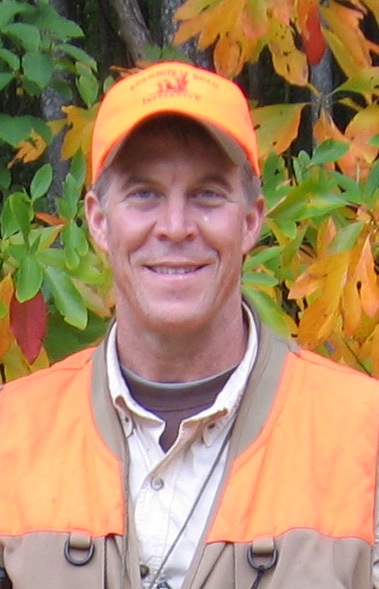
My Quail’s Backyard Dust Bath
Sheryl and I bought our piece of heaven in central Arkansas in 1998. The upland 20 acres were “improved” pasture and hayland – sterile, sodbound fields of Bermuda, fescue and bahia. But I focused—Sheryl says obsessed—on the positives, the potential to restore that land into diverse, native grassland habitat, maybe even to attract and support a covey of wild quail.
My job as NBCI Director is more about people than critters. Exaggeration? This job is so socialized (in the societal, not the governmental, sense) that when my computer died this week, my ability to work temporarily died with it. Contacts, email inbox, Word documents, ongoing projects, archives, references and most of my communications capability were out of commission. Not only a helpless feeling, but a comically perverse situation, that wildlife conservation could become so dependent on modern technologies.
Restoring habitat on my land not only provides a handhold on sanity during such comic perversions, but also helps me maintain connection and personal experience with field work. As a bonus, I learn truths about quail management. Thus, managing my land is my reality check.
On the plus side, quail management demands lots of “stuff.” I had a good excuse to buy a backpack herbicide sprayer to begin laying waste to acres of introduced forage grasses; then a good chainsaw to thin trees; then burning gear – drip torch, flappers, rakes, and a backpack water sprayer – to feed a fledgling pyromania. The inevitable big cahuna, of course, was the tractor, a two-cylinder John Deere “Johnny Popper” (wide front end) that’s older than I am but runs better. We even acquired a herd of goats, ostensibly for brush control. Between you and me, though, the goats were more for “horse control” … to distract my young daughter’s budding equine fantasies!
On the cold side of the reality check are some of the most valuable life lessons. Tractors require expensive implements; and endless maintenance. Chainsaws create heatstroke, lacerations and firewood. The latter needs a trailer for hauling, a shed for storing, and a woodstove for burning. Goats must be fenced, but don’t respect fences. Herbicide sprayers require herbicides; jugs and jugs of it. Neighbors and passers-by don’t much like fire. Even when the season and humidity and wind are right, and helping hands are available, and all the phone calls are made, my burns seem to attract undesired attention. Did I mention the chiggers? … give me serpent-sized rattlers any day!
Worst of all, once the quail habitat is in suitable condition, the sobering reality of 50” annual rainfall sets in. The vegetation, that I’ve worked so hard to set back to an earlier successional state, seems to grow back by the time I get to the house. The cycle, and the work, never ends.
Thus, one of the most important reality checks of all: if quail restoration was easy, everyone would be doing it, and quail already would be restored. As NBCI Director, this reality must stay at the center of my and our strategic thinking. If we hope to restore huntable populations of bobwhites across their range, we must find ways to encourage and assist many thousands of people – almost all of whom are less motivated than I am – to restore and actively manage native grassland habitat.
As I have lounged on my deck this week at happy hour, scratching chiggers and enjoying a computer-less reprieve at work, a pair of wild bobwhites has been dusting in their favorite spot in the middle of our back yard, oblivious to me. Presumably, she’s laying an egg a day and soon will be incubating. Yep, it’s worth it – lacerations, chiggers and all!


